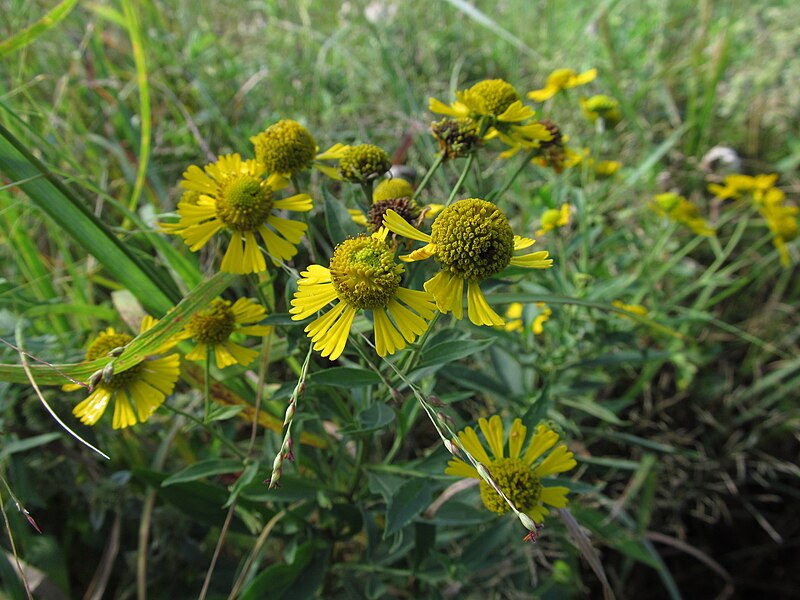
We last looked at Helenium autumnale in 2015. Since then it has become very well established in that meadow in Schenley Park. We repeat the text of the earlier article:
Sneezeweed is an attractive composite flower with distinctively notched rays that make it easy to identify. (A similar species, Purple-Headed Sneezeweed, Helenium flexuosum, has been introduced in a few locations; it is easy to distinguish by the dark brownish button in the center.) The plant likes damp areas; this one was growing in Schenley Park, in a section of former lawn that is being allowed to grow into a meadow for better water retention. It was blooming in the middle of September.

Gray describes the genus and the species:
HELÈNIUM L. SNEEZEWEED. Heads many-flowered, radiate; rays several, wedge-shaped, 3-6-cleft, fertile, rarely sterile. Involucre small, reflexed; the bracts linear or awl-shaped. Receptacle globose or ellipsoid. Achenes top-shaped, ribbed; pappus of 6-8 thin 1-nerved chaffy scales, the nerve usually extended into a bristle or point. — Erect branching herbs with alternate leaves, often sprinkled with bitter aromatic resinous globules; heads yellow, rarely purple, terminal, single or corymbed. (The Greek name of some plant, said to be named after Helenus, son of Priam.)
Leaves broad, decurrent on the angled stem.
H. autumnàle L. Perennial, nearly smooth, 0.2-2 m. high; leaves mostly toothed, lanceolate to ovate-oblong; heads larger (2-4 cm. broad); disk yellow; rays fertile, yellow. — Alluvial river-banks and wet ground, w. Que. and w. Mass. to Man., southw. and westw. Aug.-Oct.


